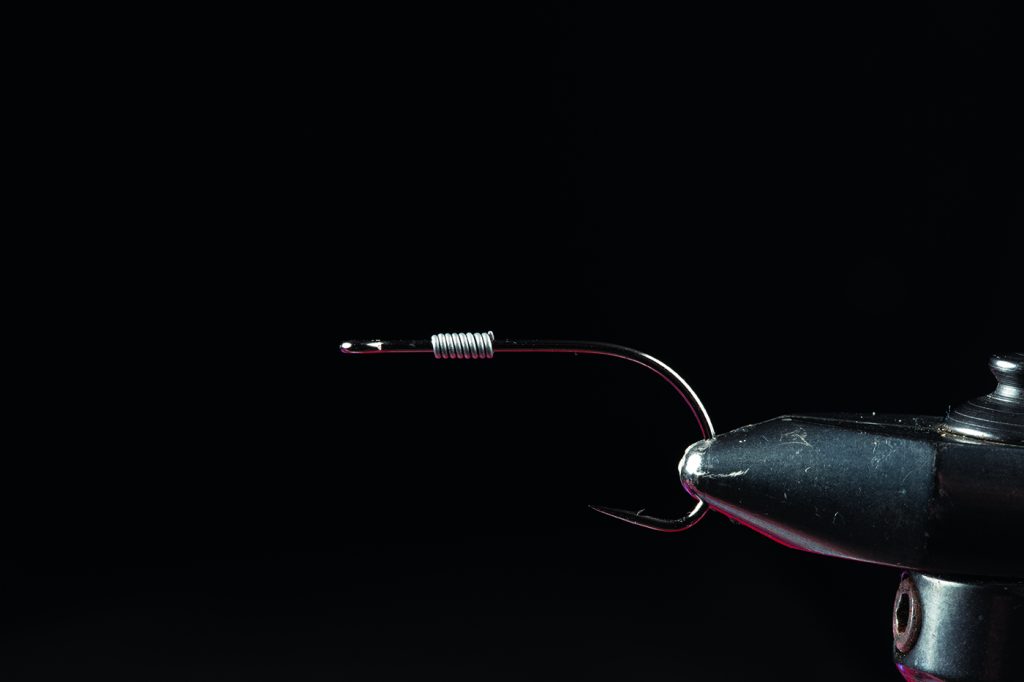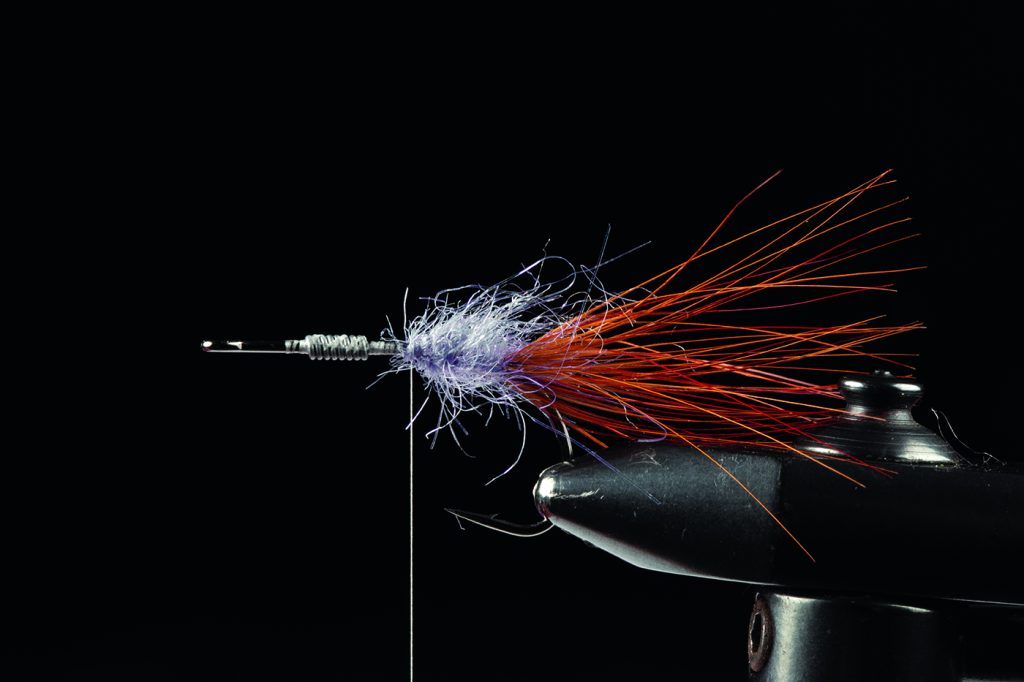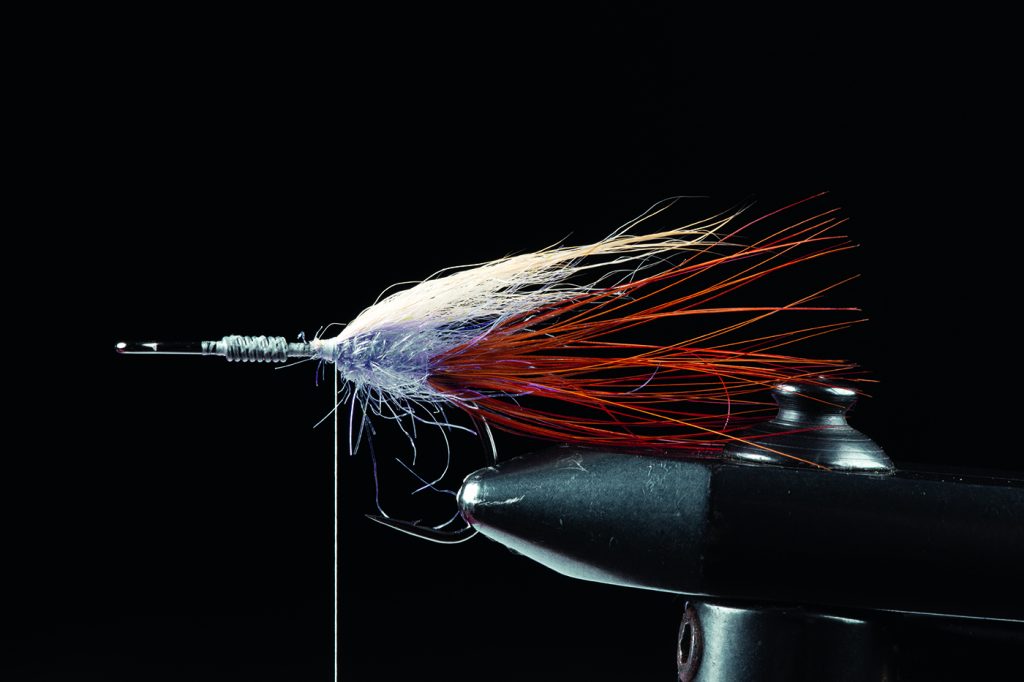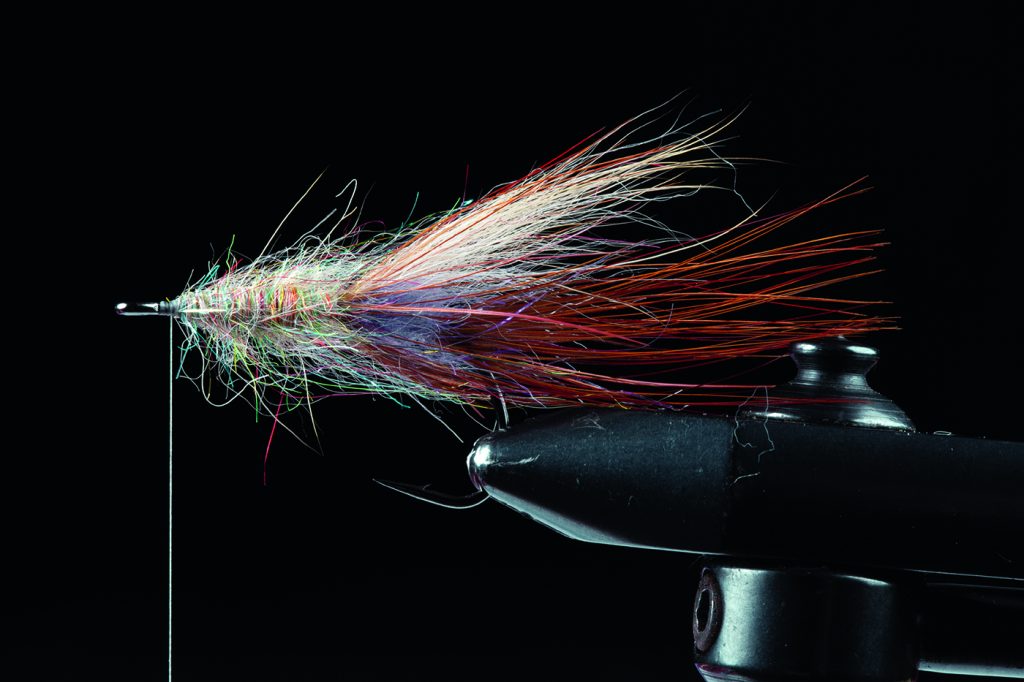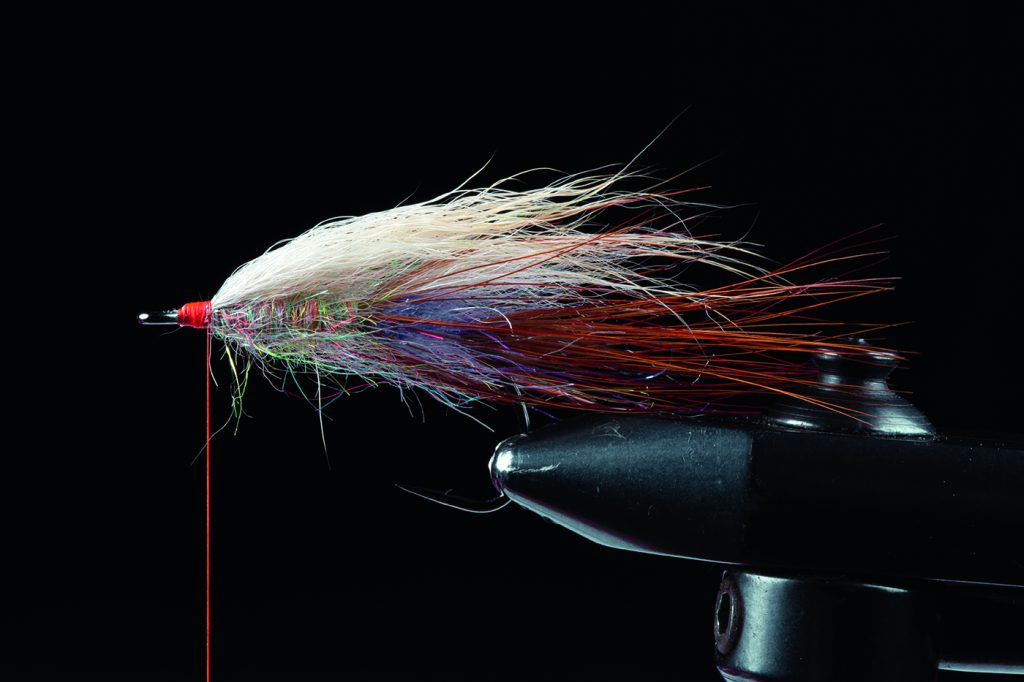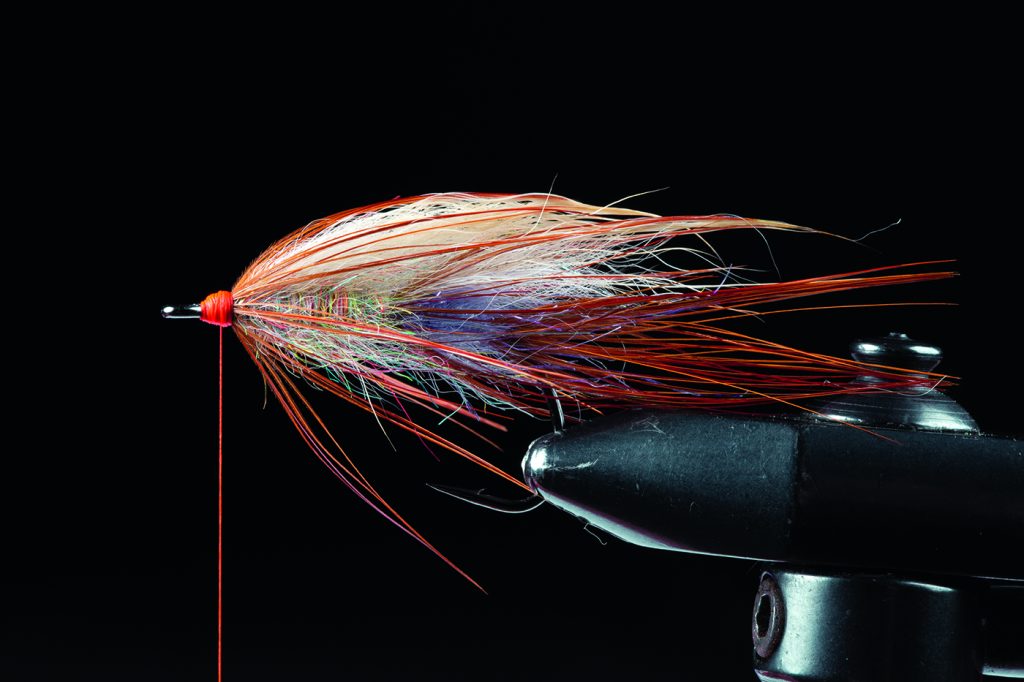
Countless saltwater flies have been named the key to success when it comes to catching sea trout in the salt. This time, however, the wolf is actually coming. Martin Votborg is the originator behind The Wolf and has been fishing it and tweaking the design for over 20 years. He says without any uncertainty that The Wolf catches sea trout all through the year.
By Peter Lyngby
(this artickle has been published in the danish magazine “Sportsfiskeren” and the online magazine “In The Loop Magazine”)
Some flies just have it. That little extra life life quality. Something tells you that they will catch fish, even if they bear no direct resemblance to a septic prey. The Wolf is one of those flies, originated by Martin Votborg over 20 years ago. You don’t need decades of experience to recognise that The Wolf is a good fly and why it’s still Martin’s favourite after all those years. He can explain better than anyone.
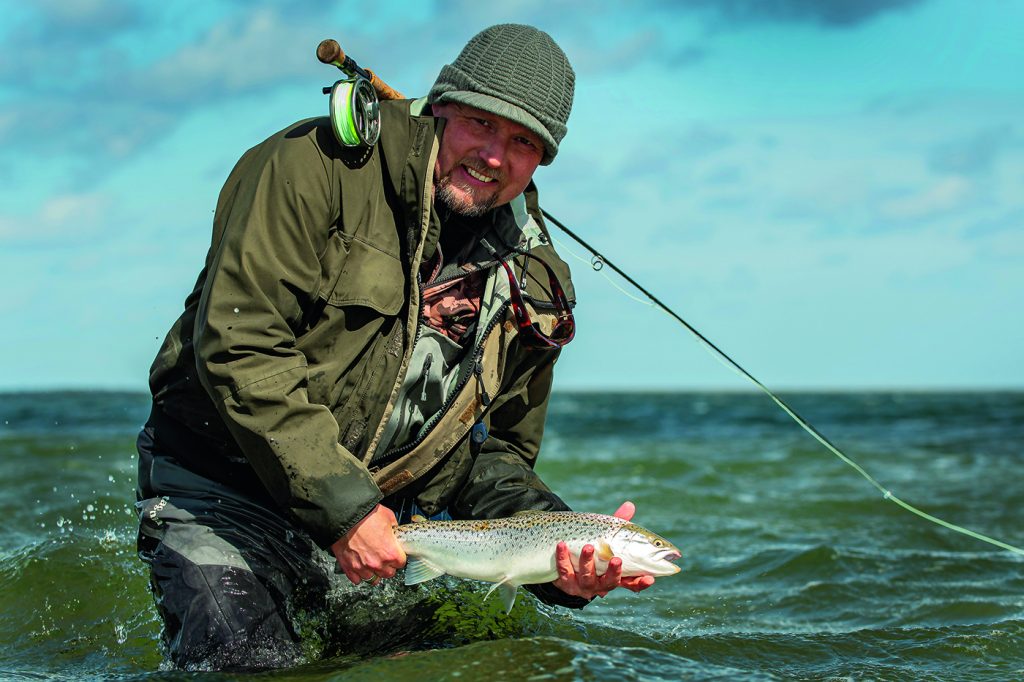
Twenty years of evolution
Martin Vorborg from the Northern part of Jutland, Denmark, has sold fishing tackle for over 20 years and countless flies come and go. The first part of his career he spent with the tackle store Brasholt and now runs his own company, min flue.dk, where he sells flitting materials and ties flies to order. Martin is also active on YouTube and other social media with video and pictures. The Wolf is a frequent item on his invoices. He first tied the fly in the late 1990’s.
– I don’t remember the exact year I forst tied the fly, but I came across an old photo of a sea trout, caught on The Wolf. The year on the picture was 1999 and I know I had fished the fly for a few years before catching that fish.
– I’ve really haven’t made many changes over the years. It’s more or less the same fly, but I’ve switched to a better hook and I’ve made a few adjustments to the dubbing that forms the body. With a smile Martin notes that he’s changed the colour of the tying thread, but that it probably hasn’t made much difference.

Controversial wing
As the name implies Martin used wolf hair for the wings. Wolves are a hot subject in Denmark at the moment and wolf isn’t readily available in the stores for several reasons. But there are perfectly acceptable substitutes, according to Martin.
– 25 years ago we had another and less nuanced attention to the provenience of fly tying materials. I can’t even remember when I got the first piece of skin from a Canadian wolf. But I do like the structure of the hair from the Canadian wolf. The soft mobile hairs really impart life to the fly. Wolf hairs have several colour nuances, but the ones I use have cream coloured tips and are darker closer to the skin. I use the underfur mixed with synthetic dubbing for the body. There are perfectly adequate substitutes for wolf. I’ve used coyote, grey fox and raccoon. If the entire fishing club want to use wolf, look for vintage fur coats, which you can often find for little money. Those animals are dead a long time ago, Martin points out.
Sea trout and sea bass
From his home in Storvorde, south of Aalborg, Martin is close to both river and coast lines. Most of fishing fishing time is spent chasing sea trout. During the summer months in the rivers and the rest of the in the salt. In the salt, The Wolf is always Martin’s first choice, but that’s not because he’s stubborn, he says.
– I don’t fish sea trout exclusively, nor do I always use The Wolf. I enjoy the odd expedition for salmon, but what I enjoy most is to be able to get out often. Not necessarily for day long trips. Just a few hours keeps my up to date and I can follow the season at first hand. A week on a salmon river is almost just a point in time.
When we began fishing the fly we caught many fish. It’s just a good fly and it does well all through the year and in most conditions. Over time it has become my first choice, but I do use other flies. At one point a friend of mine stated that he would no longer use the fly, because it was too easy. I’m not quite there myself yet and there are days when tricky trout will only nip the tail of the fly. On those day I resort to a small gammarus fished as a dropper together with The Wolf. But I will dare to claim that if you don’t succeed with The Wolf, it’s not the fly’s fault. There’s nothing magic about any fly and if The Wolf dosen’t work, change to something else or search out a different location.
I use The Wolf in all conditions and fish it on both floating, intermediate and slow sinking lines. I adjust the fishing depth depending on conditions and temperature, but I’ve learned that changing the speed of the retrieve is very effective. Though I rarely resort to the high speed roly-poly retrieve, says Martin as he does an imaginary roly-poly.
Tying tips
The fly is fairly straight forward, yet Martin has a few important tips to get the fly just as he prefers it. If you’re not up for it, Martin is a professional fly tier and takes orders.
– I have a few customers who just love The Wolf. They have ordered several variants, for instance some with a little pink in them for winter fishing. Personally I prefer the original and I always tie in a little weight, so the fly dives a little when I stop the retrieve. The most important tip is to keep the fly sparse. The body can be tied relatively thick, so you can brush out the dubbing, but keep the hackles to just a few turns and the wings quite thin. Otherwise you end up with a stiff broom that doesn’t sink with no mobility in the water. Today I tie them only on size 4 and 6 hooks. Size 6 is the standard and the size 4 is for tougher conditions with wind and coloured water, where I need a little more silhouette. The orange head provides an extra dash of colour, but everything but the head I tie with a white thread. Usually the fly will get chewed up and in that case, the white thread won’t be visible through the dubbing.
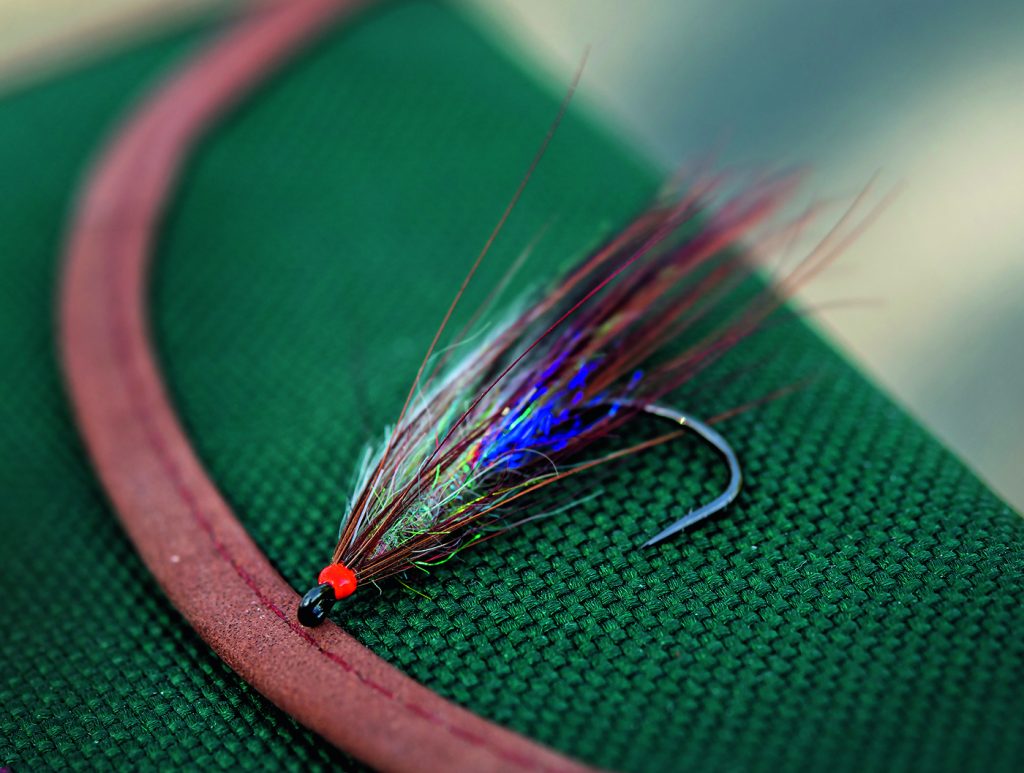
The Wolf
Hook: Ahrex NS122, size 4-6.
Weight: Lead free wire.
Tying thread: White.
Back hackle: Golden pheasant, red breast feather.
Butt: Angel Hair, Dark Ultra Violet.
Tail: Wolf.
Center hackle: Golden pheasant, red breast feather.
Body: Salmo Supreme Dub, rainbow colour and wolf underfur.
Wing: Wolf.
Front hackle: Golden pheasant, red breast feather.
Head: Fire Orange tying thread.
